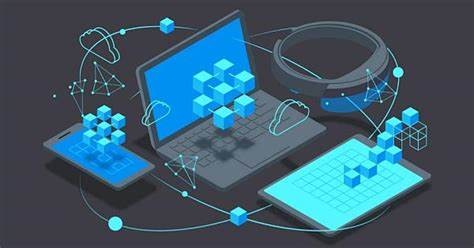
Plug and Play- Lessons for IoT
See how "Plug and Play" is bringing IoT into the Future
Microsoft and Intel launched Windows Plug and Play and the Universal Serial Bus (USB) on PCs in 1995 and 1998, respectively. What weird happened? Thankfully, PnP and USB made it possible for even my mother to replace a mouse.
The market economics changed when the complexity, time, specialization, expense, stomach acid, and swear words required to handle PCs were reduced. Want a window into what happened? Innovation accelerated while the cost of operating PCs shrank. Need proof? Simply look up “USB devices” on Amazon or “PC ownership patterns in US households,” which has risen from under forty percent to nearly ninety percent since 1997.
USB and PnP weren’t the only reasons, but they contributed to becoming a thriving PC ecosystem.

Lessons for IoT
IoT today reminds me of the early days of the personal computer. IoT is now the expensive world of specialists who talk in jargon that most people don't understand and have a soldering iron on their desk. PCs have always been fantastic, but it wasn't until the costs and complexities of owning one dropped that adoption soared.
Knowing that corporate deciders are systematically averse to risk, cost, and complexity, we must ask ourselves what we can do better in IoT?
1. Developers

IoT production is currently the purview of high-priced consultants. This needs to be improved. Anything from networking to protection to firmware updates should be standardized, reusable, and recorded from the system to the cloud.
Reducing the number of developer capital required to create and sustain solutions benefits both IoT solution cost models and the macroeconomic conditions needed to spur innovation. The lower the cost and technological barriers to building new solutions, the more innovative ideas will find their way to market.
2. Data

Credit: Boston Consulting Group, The Risks and Rewards of Data Sharing for Smart Cities.
Different industries, such as South East Water (SEW) for water metering, are already working on this issue. Under the Lightweight M2M standard, SEW specified fifty-nine data objects for smart water metering (LwM2M).
These data objects are available for free to anyone developing smart water metering solutions. If we all used the same underlying data models, the shared data could better manage water, the world’s most precious resource.
Securely sharing data while respecting privacy concerns should be as simple as a business decision and a few mouse-clicks.
3. Device Management
Device management services, such as zero-touch provisioning, security, firmware updates, and data reporting, are necessary for all IoT devices to handle operating costs. Then there's the issue of how to make IoT investments future-proof.
Why Encoding Enhancers for Embedded System Engineering Services?
Design development services, firmware engineering, hardware engineering, verification and validation are all part of our customized hardware and embedded device development for industrial use cases. Our wide team of software developers and engineers are experts in embedded system design, embedded system programming, embedded system development, feature-driven development, and release management.
A business judgement, not an IT project, should be made when selecting a system management framework to run devices securely. Businesses can come and go in the IoT, just as they do in every other sector. The regulatory landscape will change. ARM Pelion was spun out in the last 12 months, and the US IoT Cybersecurity Act was passed.

As our environment becomes more interactive, IoT adopters must find a cost-effective way to support IoT devices by adopting some traditional device management framework that makes sense. Support for interoperability requirements is also helpful to IoT product manufacturers and markets. In the case of proprietary-based solutions, the reverse is also true.
Meaningful Scalability
We can't scale the technology to serve millions of devices, so IoT adoption hasn't met early expectations, but we haven't paid enough attention to business issues. Other sectors can be able to lead us in the right direction. Take a look at how the GSMA and global cellular norms are beginning to form the Internet of Things. Small and large businesses can now enter global markets with a single NB-IoT or LTE object deployed anywhere in the world. Because of China's aggressive adoption, LTE and NB-IoT module prices are continuing to fall. And with no connectivity infrastructure to deploy, cellular networks improve the economics of large deployments and proofs-of-concept. Non-cellular networks have their use-cases, but it is hard to argue against this kind of economic rationalization as market studies increasingly show.
Gartner said in Hype Cycle for IoT Standards and Protocols, June 2020, “LwM2M simplifies and unifies IoT application development.” Agreed also provides essential device management services to manage IoT solutions while supporting forward-thinking IoT strategies.
Conclusion
IoT adds value by altering the economics of data collection and action, but hitting significant acceptance numbers would necessitate future-proof IoT strategies with stable, manageable cost structures.
The market is speaking up, saying, "IoT is insufficient." We need a plan.” Is anybody paying attention?